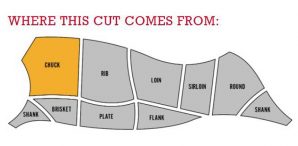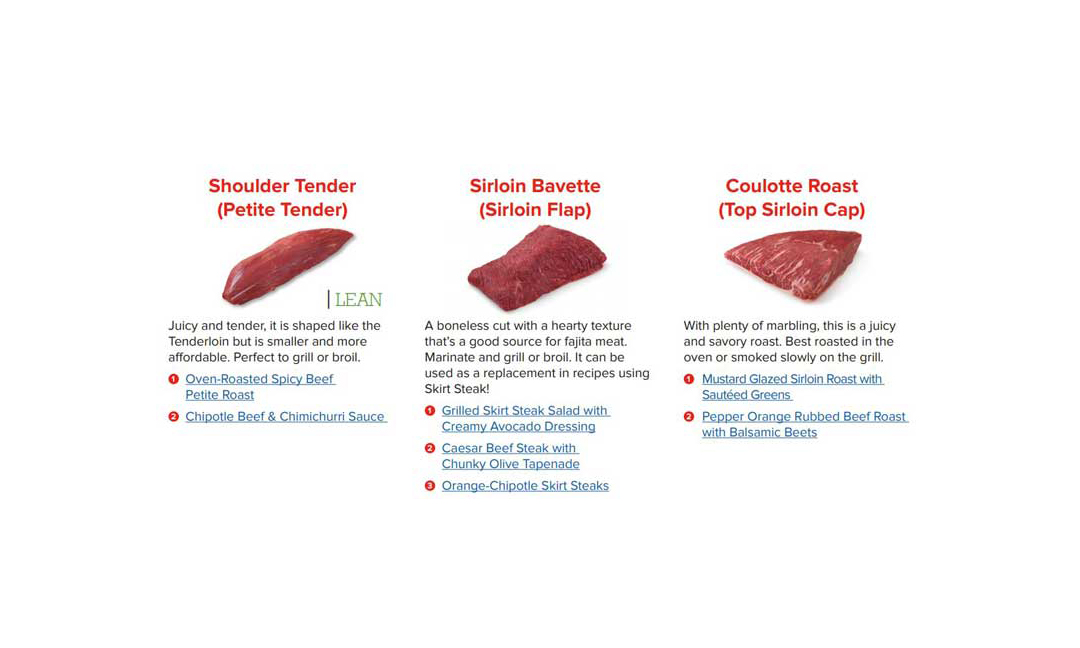The annual “What’s Hot” culinary forecast released by the National Restaurant Association named “new cuts of meat” as the top trend for 2018, so the “Beef. It’s What’s For Dinner.” culinary center chefs and meat scientists have put together a list of their top five innovative cuts.
While many of these cuts are available to the home cook, some are just starting to gain popularity in restaurants:
1) Shoulder Tender
2) Sirloin Bavette
3) Coulotte
4) Petite Sirloin
5) Tri-Tip Roast

“If you like Brisket, you might want to try a Tri-Tip Roast. Or, if you’re in the mood for Strip Steak, you will probably enjoy the Coulotte,” explains Chef Laura Hagen, senior director, culinary, National Cattlemen’s Beef Association, a contractor to the Beef Checkoff. “It’s exciting to see innovative cuts gain popularity across the country. Diners and home cooks shouldn’t let a name they don’t recognize keep them from trying something new.”
The new BeefItsWhatsForDinner.com has a section dedicated to beef cuts with details on everything including where the cut comes from, how to cook it and similar cuts that can be substituted.
For example:
- The Shoulder Tender is a lean cut that is shaped like the Tenderloin, but smaller. Like Tenderloin, it can be cut into medallions and is great for grilling, roasting or broiling.
- The Sirloin Bavette, also known as the Sirloin Flap, is a thin boneless cut that’s great for fajita meat. It should be marinated and then grilled or broiled.
- The Coulotte, a juicy, savory roast, is known by many other names including Top Sirloin Cap. It is best roasted in the oven or smoked slowly on the grill. It can also be cut into Coulotte Steaks.
- The Petite Sirloin, also known as the Ball Tip, is a small roast. It’s a great cut for someone looking to maximize value and can be roasted, broiled or braised.
- Finally, the Tri-Tip Roast is well known across much of the west, but is just gaining popularity on the East Coast. This lean cut is tender, full of flavor and can be grilled, roasted, braised or broiled.
The Beef Checkoff Program was established as part of the 1985 Farm Bill. The checkoff assesses $1 per head on the sale of live domestic and imported cattle, in addition to a comparable assessment on imported beef and beef products. States may retain up to 50 cents on the dollar and forward the other 50 cents per head to the Cattlemen’s Beef Promotion and Research Board, which administers the national checkoff program, subject to USDA approval.
Keep reading:
https://www.theshelbyreport.com/2018/01/10/scott-stuart-beef-board-qa/
https://www.theshelbyreport.com/2017/12/29/health-wellness-driving-2018-food-trends/
https://www.theshelbyreport.com/2017/12/21/western-beef-deploys-self-point-online-mobile-shopping-technology/

